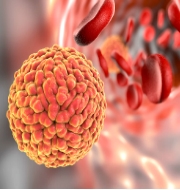NBRC researchers decipher how Zika virus causes microcephaly
Scientists from National Brain Research Centre (NBRC) have successfully identified molecular and cellular mechanisms by which Zika virus causes microcephaly. Babies born with microcephaly have significantly smaller head size compared with normal babies.
Key Findings
The researchers found envelop protein (E protein) of Zika virus, which is responsible for entry of virus into brain stem cells, was responsible for arresting proliferation of human foetal neural stem cells and also killing cells that were becoming neuron-like. The combined effect reduces pool of foetal brain cells leading to smaller size of the brain.
Significance
The study shows that neutralising E protein of Zika virus can help prevent or reduce its harmful effects in developing foetus. The E protein can be seen as likely therapeutic target. The E protein in Zika virus is mutated and very different from envelop protein of other flaviviruses such as dengue, yellow fever, west nilevirus, and Japanese encephalitis. It was found to be more potent in arresting the proliferation of brain stem cells. The other three envelop proteins were acting in less significant manner.
Zika virus
Zika virus is vector borne disease transmitted primarily by Aedes aegypti mosquitoes, which also transmits dengue. It can also spread through blood transfusion and sexual contact. It is capable of causing serious birth defects i.e. neurological disorders and foetal deformation known as Microcephaly in which infants are born with abnormally smaller heads. Besides possible link between virus and Guillain-Barré syndrome (a condition in which the body’s immune system attacks part of the nervous system) is also suspected. There is no specific treatment or vaccine currently available to treat Zika. The best form of prevention is protection against mosquito bites and clearing stagnant water where mosquitoes breed.
Month: Current Affairs - August, 2018


